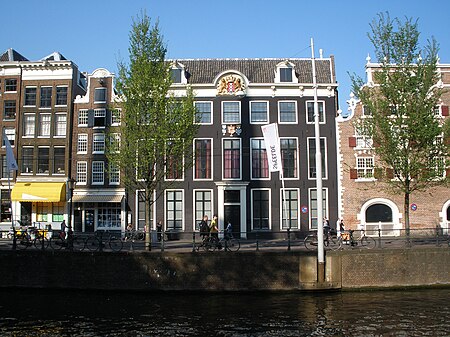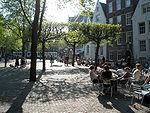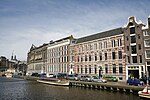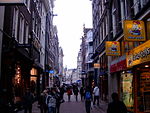Handboogdoelen, Amsterdam
16th century in Amsterdam17th century in Amsterdam18th century in AmsterdamArchery in the NetherlandsBuildings and structures completed in the 16th century ... and 4 more
Militia group portraitsRijksmonuments in AmsterdamShooting ranges in the NetherlandsUniversity of Amsterdam

The Handboogdoelen ("longbowmen's shooting range") is a building on the Singel canal in Amsterdam, near Koningsplein square. It dates back to the early 16th century and originally served as headquarters and shooting range of the local schutterij (civic guard). Most of the current building at Singel 421 dates to the 18th century and is part of the main complex of the Amsterdam University Library. The Doelenzaal hall on the ground floor of the building (not to be confused with the Doelenzaal on Kloveniersburgwal canal) is used for lectures, meetings, receptions and doctoral dissertations. The building has rijksmonument status.
Excerpt from the Wikipedia article Handboogdoelen, Amsterdam (License: CC BY-SA 3.0, Authors, Images).Handboogdoelen, Amsterdam
Singel, Amsterdam Centrum
Geographical coordinates (GPS) Address Nearby Places Show on map
Geographical coordinates (GPS)
| Latitude | Longitude |
|---|---|
| N 52.367777777778 ° | E 4.8894444444444 ° |
Address
Koningsplein
Singel
1012 XS Amsterdam, Centrum
North Holland, Netherlands
Open on Google Maps










